Last Sept. 17, the National Archaeological Museum of Naples opened to the public two new exhibitions that are part of the permanent Domus section, dedicated to the culture ofliving in the Vesuvian area. The exhibitions aim to broaden the visitor experience through a dialogue between material memory, documentary sources and different artistic languages, constituting a further step in the process of enhancing the MANN’s heritage. Alongside ancient masterpieces, the museum preserves a substantial collection of photographs, watercolors and archival documents, which offer unique evidence of the perception and interpretation of the ancient world over time. The exhibitions, curated by Andrea Milanese, Ruggiero Ferrajoli and Domenico Pino, will be accessible until Feb. 28, 2026.
“The National Archaeological Museum of Naples,” comments Italian Museums General Director Massimo Osanna, "is not only a place of conservation, but also a research laboratory: investigating our archives means bringing out new keys to interpretation, which help us understand the origins of the myth of Pompeii and the role it played in the European imagination. Enhancing archives and collections means giving back to the public the complexity of a heritage that lives on through multiple forms of expression. These precious photographs allow us to observe the fascination exerted by Pompeii in the European imagination from a novel perspective, through a then entirely new form of expression. The rediscovery of this fund is the fruit of research and enhancement of the MANN’s rich heritage, which confirms that study and documentary investigation are fundamental tools for expanding knowledge and, with it, the enjoyment of heritage.
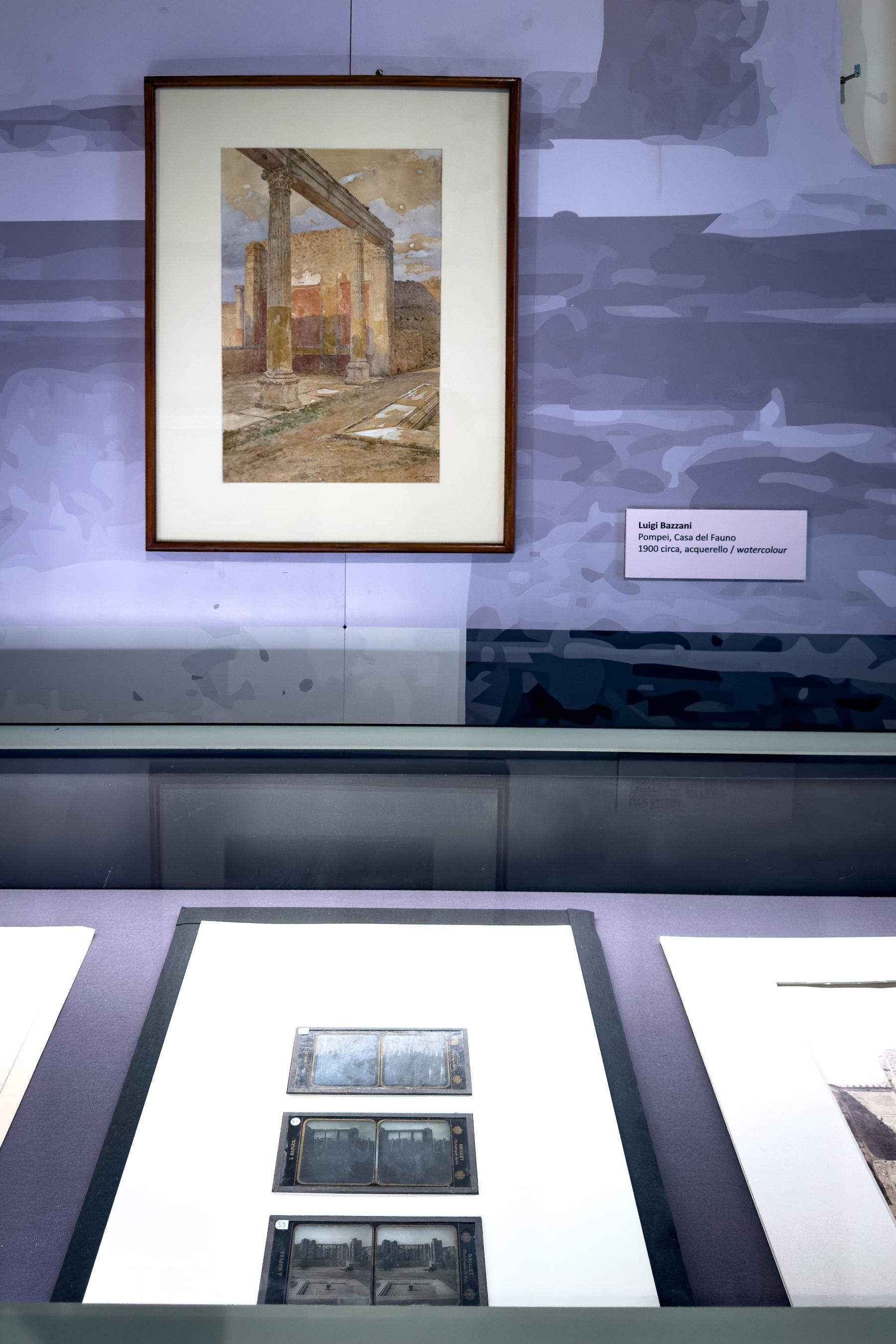
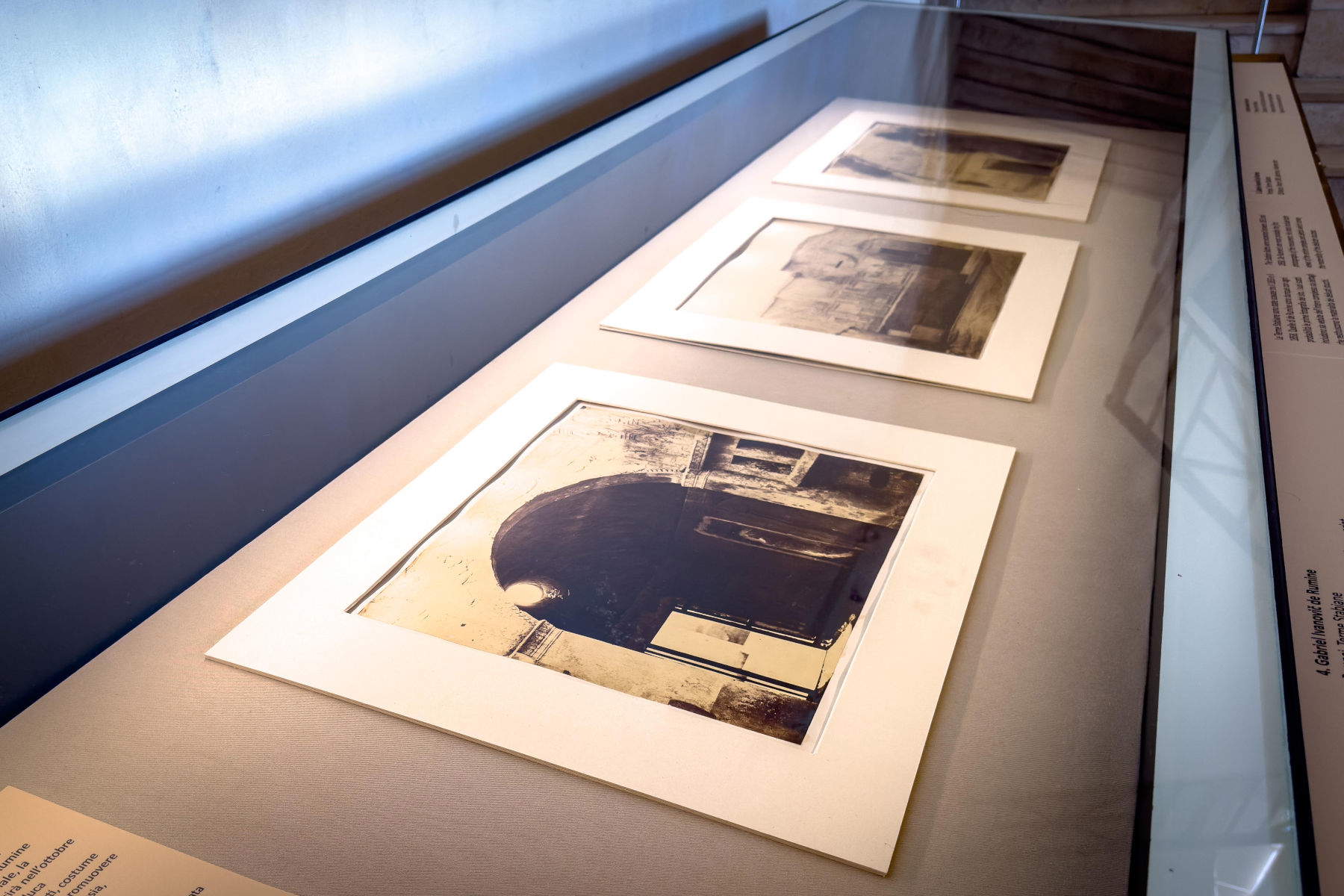
The first exhibition, entitled Luigi Bazzani and the Pompeian House, begins with the restoration of eighteen watercolors made by Luigi Bazzani (Bologna, 1836 - Rome, 1927), a successful painter and set designer. The MANN has one of Bazzani’s most important collections, along with the Victoria & Albert Museum in London and the Galleria Nazionale d’Arte Moderna in Rome. The works on display also constitute historical documents of archaeological discoveries in Vesuvian cities. The watercolors depict various Pompeian subjects, from the Forum to the Temple of Isis, including domestic interiors and gardens.
Alongside Bazzani’s watercolors, the exhibition features a gouache, a gouache, by Giuseppe Marsigli, drawings by Pasquale Maria Veneri, antique photographs and 19th-century bronzes. Special attention is devoted to the House of the Faun, discovered in 1830 and noted for the richness of its decorative apparatus, which includes floors, terracotta friezes, the mosaic of the Battle of Isso, and the bronze statuette of the dancing faun. The exhibits document both the general structure of the building and the interior decorations, giving a detailed picture of the architectural and artistic complexity of the residence. The display is located in Room XCV, in close proximity to the Domus section and the temporary exhibition dedicated to Gabriel Ivanovič de Rumine.
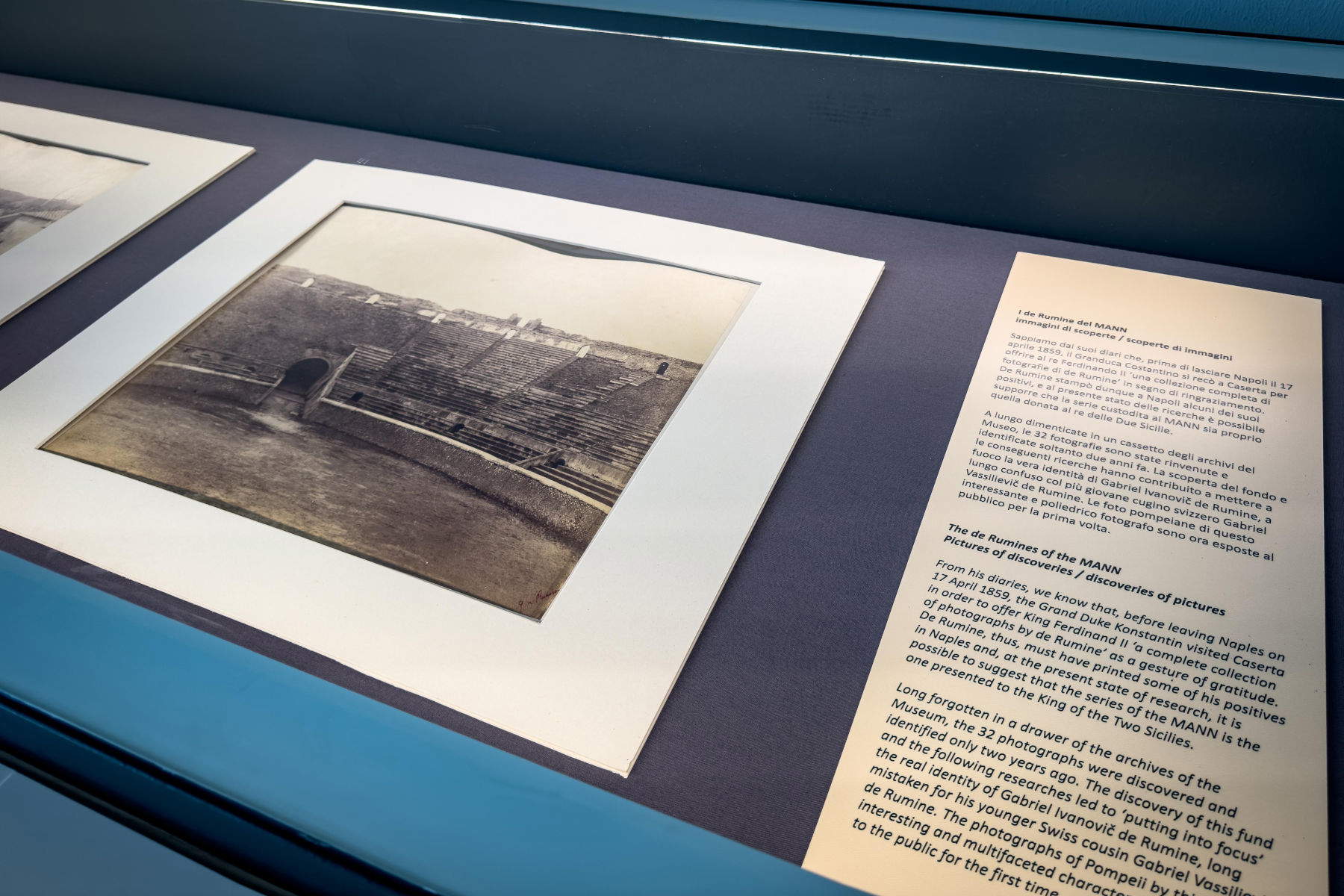
The second exhibition, 1859 - A Russian Photographer in Pompeii: Gabriel Ivanovič de Rumine, presents a wide selection of photographs that allow us to observe Pompeii through the eyes of a photographer active in the 19th century. In 1859, de Rumine traveled as a photographer in the retinue of Grand Duke Constantine of Russia, touching several Mediterranean cities, including Palermo, Naples, Athens and Jerusalem. With special permission granted by King Ferdinand II, he took a series of views of Pompeii that represent one of the earliest photographic reportages of the excavations, and among the first large-format ones made at a time when photography was still a relatively young discipline.
Aware of the importance of the images, de Rumine sent copies to Paris, where they were exhibited at the Société Française de Photographie and received with interest. The MANN preserves twenty-eight of these albumen shots, which remained long forgotten in the archives without date or attribution. The exhibition offers for the first time the opportunity to view these photographs together with other historical images and archival documents, allowing a detailed picture of the approach to photographic documentation of archaeological sites in the modern era to be reconstructed. The exhibition takes place in the Hall of the Plastic of Pompeii, a space that, through the large model of the city, restores the evocative power and suggestion of Pompeii, emphasizing the relationship between artistic representation and archaeological reality.
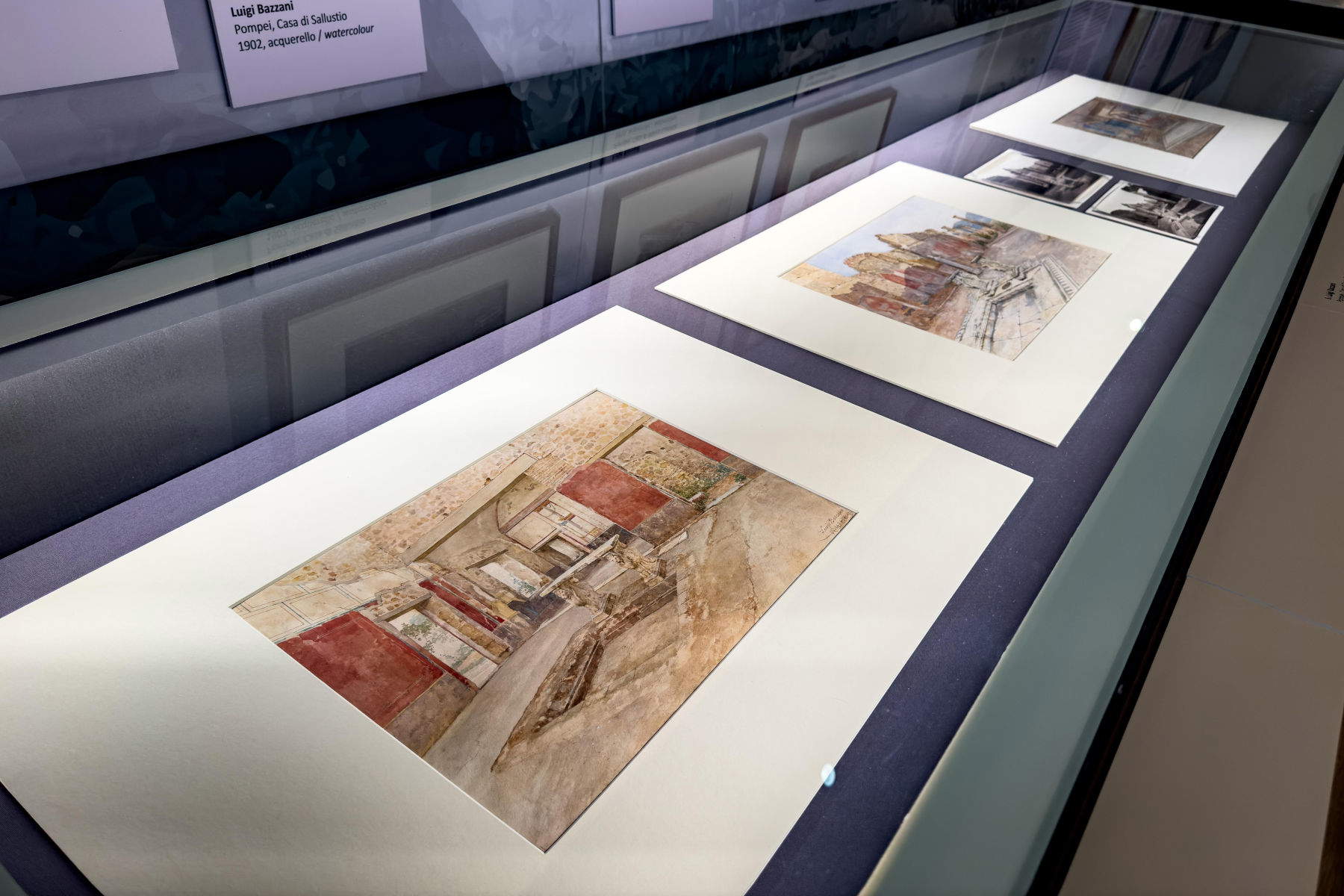
Both initiatives are part of a broader project to enhance MANN’s graphic and photographic collections, confirming the museum’s interest not only in preserving ancient artifacts, but also in protecting and promoting documents and works that tell the story of archaeological research and the perception of heritage over time. The in-depth look at Vesuvian cities allows visitors to observe how artists and scholars have interpreted and represented Pompeii, making a significant contribution to understanding the cultural history of the area.
The exhibits combine different expressive languages, integrating watercolors, gouache, photographs and historical documents. The combination of materials makes it possible to follow the development of artistic and photographic techniques in the 19th century, as well as to understand the ways in which images participated in the construction of the European imagination about Pompeii. Through the careful layout, visitors can compare the methods of historical and artistic documentation, appreciating the complexity and richness of the materials held by the museum. The exhibition tour is also an opportunity to reflect on the role of museums in preserving and making accessible lesser-known archives and collections, but of great scientific and documentary value.
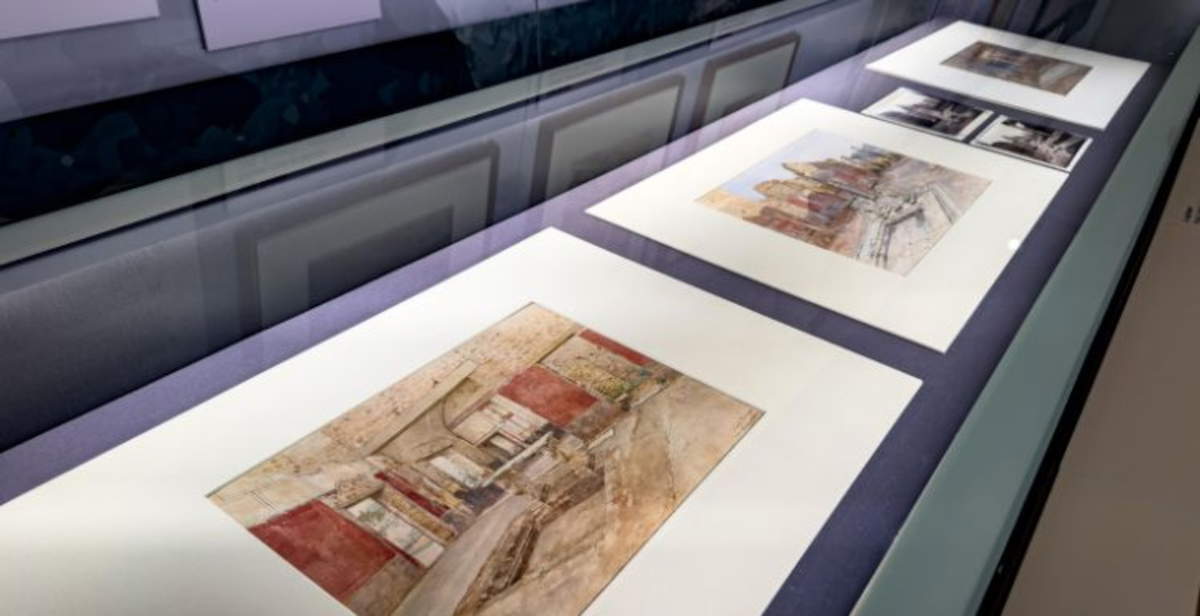 |
| Pompeii told by two 19th-century artists: Bazzani and de Rumine. The exhibitions at the MANN in Naples |
Warning: the translation into English of the original Italian article was created using automatic tools. We undertake to review all articles, but we do not guarantee the total absence of inaccuracies in the translation due to the program. You can find the original by clicking on the ITA button. If you find any mistake,please contact us.